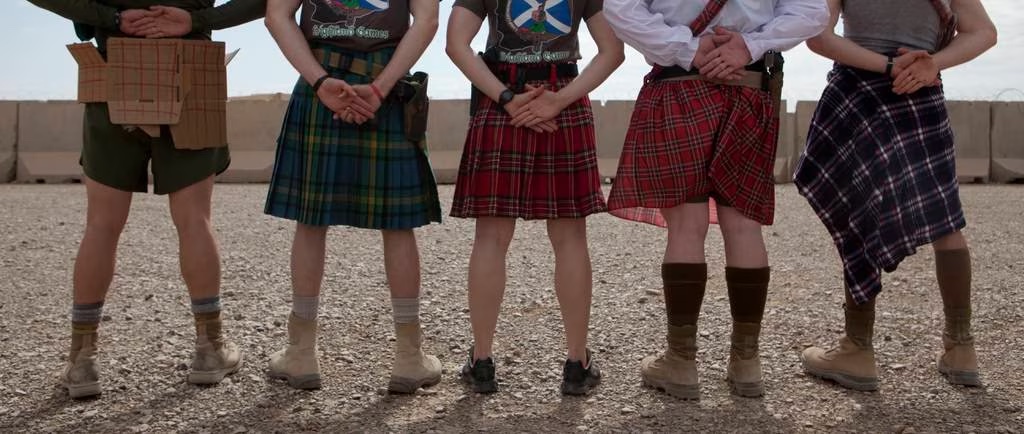Easy, breezy, beautiful combat kilts…
Dating back to the 18th century in Scotland, the men’s skirt known as a kilt — the version we know today — proliferated among fierce warriors known as Highlanders.
“The kilt is a symbol of honor for the clan which they belong,” according to Scottish historical archives.“ [It] was a manner of dress that afforded the fighting army with possibly its most useful tool.”
The battle skirt, however, had a relatively short life among soldiers and was eventually phased out with the adoption of official uniforms during World War II. But so beloved was the item that it even made its way to American military use.
“There was one unit that wore kilts in combat, and that was the 79th New York Volunteer Infantry, which was originally made up of Scottish immigrants when it was formed in the late 1850s as the Highland Guard,” Matthew J. Seelinger, chief historian for the Army Historical Foundation, told Military Times. “It later went by other nicknames — Highland Regiment, Highlanders, or the Cameron Highlanders.”
These U.S.-based fighters were best-known for their Civil War contributions — particularly during the First Battle of Bull Run in 1861.
“At Bull Run, since the Union Army did not have time to issue a standard uniform, these old militia units wore what they had,” Seelinger added. “There was a variety of uniforms worn at the battle, such as kilts, Zouaves (based on French colonial uniforms), and other examples. There were even cases of Confederates wearing blue and Union soldiers wearing gray.”
Kilts were seen as extremely versatile military garments. Despite the contemporary view that skirts are feminine, some of the most fearsome warriors in Scottish history wore them up until the 1940s, when uniforms became centrally designed by the British.
“In the aftermath of the First Jacobite Rebellion of 1715, independent companies of militia were raised from loyalist Highland clans for policing and peacekeeping duties,” according to the British National Army Museum. “These companies were commonly known in Gaelic as ‘Am Freiceadan Dubh,’ or ‘The Black Watch,’ due to their unpopular nature and their dark green government-issue tartan — the regiment wore kilts as part of its everyday uniform until 1940.”
The Black Watch is known for its legendary bravery in battle across 270 years of service to the British crown. The dark tartan kilts they donned, paired with red coats, made them a fearsome unit to behold. Moreover, while the kilt was intended to distinguish Scots from Britons in the Army, it also proved to be incredibly practical.
“The kilt is more than just a covering. It allowed those who wore it to move much more freely, especially in the Highlands of Scotland where the weather can become very damp,” according to Scottish history archives. “With its tight weave of strong wool, it created a barrier between the rain and skin. When the armies of the past were fighting in Scotland, the kilt with its pleat helped protect the soldier much like armor would.”
Additionally, “When the nights became cold, this garment was easily removed and spread out to create a blanket to keep the person who owned it warm.”
U.S. soldiers might draw a parallel to the popular poncho liner lovingly dubbed “the woobie.”
The kilt was free to be worn in the U.S. military during times without stringent uniform regulations, but it eventually fell out of popular use as units diversified.
“As the war went on and replacements for the 79th came from other ethnic groups, especially German and Irish, the use of kilts ended for the more traditional light blue trousers worn by most Union Army troops,” Seelinger said.
However, there still exist sporadic kilt sightings today, including in contemporary Highland games put on by the U.S. military over the past decade.
Originally published by Military Times, our sister publication.

